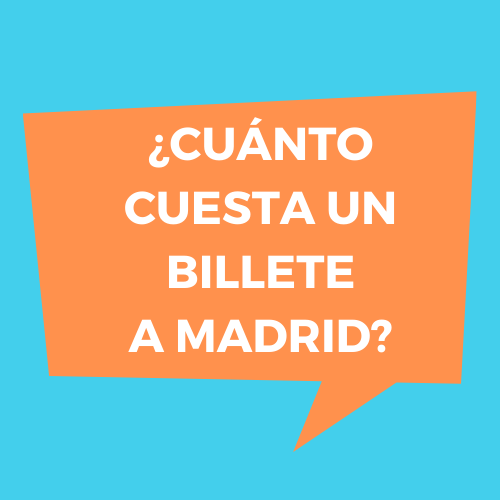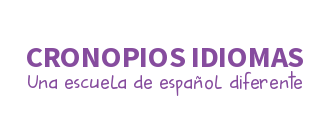Vocabulary to travel by train & bus in Spain
Learning a foreign language abroad allows you to immerse yourself in an exciting new culture. One of the best ways to practice what you are taught during our intensive courses is traveling around Spain, a country with a varied landscape and a wide range of accents, traditions and worth seeing places to discover. However, dealing with everyday situations such as purchasing a bus ticket can be a bit of a struggle for some students. But don’t panic. With this post you’ll get the basic vocabulary to travel by train & bus in Spain and your life will be easier when getting around. Fasten your seatbelts!
Most popular means of transport
Public transport is a great alternative to driving in Spain, with metro networks, buses, and an impressive number of trains, within the city or even across the country.
Train (Tren)
Tickets can be bought in person at ticket windows (“ventanillas”) and vending machines (“puestos automáticos”) at the railway station (“estación de tren”) or can be purchased online at the official site of Renfe, the main railroad company (“compañía ferroviaria”), which operates most of the national trains. Here’s some of the essential vocabulary and expressions you will need to know before getting your tickets.
- Excuse me, where’s the ticket office? – Disculpe, ¿dónde está la taquilla?
- At what time does the next train to Barcelona leave? – ¿A qué hora sale el próximo tren a Barcelona?
- A ticket to Sevilla, please. – Un billete para Sevilla, por favor.
- A round-trip ticket, please – Un billete de ida y vuelta, por favor.
- Aisle o window seat? – ¿Pasillo o ventanilla?
- How long is the journey? – ¿Cuánto dura el trayecto?
- This is a non-refundable ticket – Este billete no admite devoluciones.
- You’ll have to change train at Ciudad Real. – Tiene que cambiar de tren en Ciudad Real.
- How much is the first class/tourist class ticket to Madrid? – ¿Cuánto cuesta el billete preferente/turista a Madrid?
- What platform does the train to Zaragoza depart from? – ¿De qué andén sale el tren a Zaragoza?
- Is there any student discount? – ¿Hay algún descuento para estudiantes?
- I’m going to pay in cash. – Voy a pagar en efectivo.
- I’m going to pay with a credit card. – Voy a pagar con tarjeta de crédito.
Once you have your ticket, with your car (“coche”) and seat number (“número de asiento”), check the departures (“salidas”) information board (“panel informativo”) at the station and be careful with last minute PA systems announcements (“mensajes de megafonía”) regarding tracks (“vías”) and plattforms (“andenes”).

Bus (Autobús)
Commuting by bus (“autobús, or guagua in Canary Islands”) can be a more economic option, although not as fast as the train. Furthermore, there are plenty of small towns and villages in Spain where this is the only way to get there. The bus network covers the entire country, with many routes (“rutas”), lines (“líneas”) and operators (“compañías de autobuses”). Look at this collection of basic phrases that may come in handy in your next trip in bus.
- Does this bus go to downtown? – ¿Este autobús va al centro?
- Does this bus stop at Santiago Bernabeu Stadium? – ¿Este autobús para en el estadio Santiago Barnabéu?
- Where’s the bus station? – ¿Dónde está la terminal de autobuses?
- How much is the ticket fare to Madrid? – ¿Cuánto vale un billete a Madrid?
- What’s the next stop? – ¿Cuál es la próxima parada?
- At which stop do I have to get off? – ¿En qué parada debo bajarme?
- At which stop do I have to get off? – ¿En qué parada debo bajarme?
- Where do I have to catch the bus? – ¿Dónde se coge el autobús?
- May I drink alcohol or drink on board? – ¿Se puede beber alcohol o comer a bordo del autobús?
- Your bigger luggage will be placed under the bus, in the storage areas. – El equipaje más voluminoso deberá ir en el maletero del autobús.
- Does my ticket allow changes? – ¿Mi billete admite cambios?
Commuting in the city
The public transport system of the most populated areas offers a wide range of services. If you need to get to your accommodation (“alojamiento”) from the bus or the train station you can use the subway (“Metro”), the light railway (“Tren ligero”) or even the tramway (“Tranvía”), in cities such as Valencia. In the subway, you may need to transfer (“hacer transbordo”) to different lines before arriving at your destination, but don’t worry, a single ticket (“billete sencillo”) on the Madrid or Barcelona Metro is very affordable (“asequible”), compared to other European big cities. Bear in mind that you need to have your ticket validated (“tienes que validar tu billete”) before boarding your train (“subir al vagón”), otherwise you could be fined (“ser multado”). So, you have already learned the basic vocabulary to travel by train & bus in Spain. Don’t think twice and pack your bags. If you come to our school in Madrid, we will provide you with all the information you need to make the most of your stay in Spain, and to travel throughout our beautiful country.



